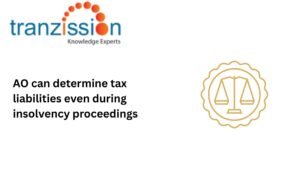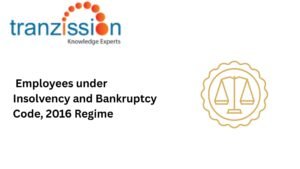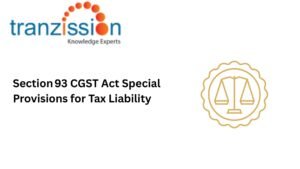
Section 30 of IBC – Insolvency and Bankruptcy Code, 2016
Table of Contents
Understanding Section 30 of IBC
Section 30 of IBC deals with the submission of a resolution plan by resolution applicants, a potential investor, or a creditor aiming to revive a distressed company. This outlines how they manage the company’s debts and affairs if their plan is approved by the Committee of Creditors (CoC), ensuring all creditors receive a fair payment. This fosters a resolution-driven insolvency framework as opposed to liquidation.
What are the objectives of Section 30?
Section 30 of IBC promotes the restructuring of distressed companies and maximisation of asset value for all creditors. It aims to ensure that the claims of operational creditors are paid and that the resolution plan is fair and equitable, adhering to the IBC provisions and requirements specified by the Insolvency and Bankruptcy Board of India (IBBI).
Procedural Requirements Under Section 30 of IBC
Submission of the Resolution Plan:
The resolution plan submits a resolution plan with an affidavit stating that he is eligible under section 29A of the IBC to the resolution professional (RP) prepared based on the information memorandum. The plan must include details for debt restructuring, operational changes, and payment terms.
Role of the Resolution Professional:
Section 30 of IBC states that the RP will examine each resolution plan to confirm that each resolution plan provides for the payment of insolvency resolution process costs in a manner specified by the Insolvency and Bankruptcy Board of India (IBBI) in priority to the payment of other debts of the corporate debtor, provides for the payment of debts of operational creditors in such manner as may be specified by the IBBI which shall not be less than the amount paid to such creditors in the event of a liquidation of the corporate debtor under section 53 or the amount that would have been paid to such creditors if the amount to be distributed under the resolution plan had been distributed per the order of priority in section 53(1), whichever is higher. The RP will then present it to the CoC for its approval.
Approval by the Committee of Creditors:
The CoC approves the resolution plan by a vote of not less than 66% of the voting share of the financial creditors, after considering its feasibility and viability, the manner of distribution proposes, and other requirements by the IBBI, complying with the applicable laws.
Key Provisions of Section 30 of IBC
Upon reading section 30 of the IBC, there are certain key provisions to adhere with
Mandatory Contents of a Resolution Plan:
Section 30(2) lists the mandatory contents that the resolution plan must include. The RP has the responsibility to examine each resolution plan received by him from the resolution applicant. The resolution plans must:
provides for the payment of insolvency resolution process costs in a manner specified by the IBBI in priority to the payment] of other debts of the corporate debtor,
Provides for the payments of debts of operational creditors.
Protection of Operational Creditors:
Section 30(2)(b) safeguards the operational creditors by providing the payment of debts of operational creditors in the resolution plan:
the amount to be paid to such creditors in the event of a liquidation of the corporate debtor under section 53, or
the amount that would have been paid to such creditors, if the amount to be distributed under the resolution plan had been distributed in accordance with the order of priority in section 53(1) of the IBC, whichever is higher.
Submission of Resolution Plan by Eligible Applicants:
The resolution applicant has to submit the resolution plan along with an affidavit stating that he is eligible under section 29A of the IBC, ensuring that only credible applicants can submit plans.
Challenges and Criticisms of Section 30 of IBC
Delays in Resolution Plan Approval:
Under section 30 of the IBC, there is no mention of the time limit for resolution professionals to submit their analysis of the resolution plans. Further, reviewing and approving resolution plans due to procedural inefficiencies and disputes between creditors of the corporate debtor.
Read more : Section 81 of IBC – Insolvency and Bankruptcy Code, 2016
Ambiguities in Payment to Operational Creditors:
One of the objectives of the IBC is to balance the interests of all stakeholders. However, there are often conflicts of interest between different stakeholders. This leads to disputes on the “fair and equitable treatment” of operational creditors in resolution plans.
Misuse of the Process by Ineligible Applicants:
Individuals who are disqualified by section 29A, attempt to submit resolution plans or participate in the resolution process. They try to gain control of the company despite being unsuitable due to past misconduct or other factors. This misuse of the process by ineligible applicants causes delays in the resolution process.
Judicial Interpretations and Landmark Cases
The Essar Steel Case clarified the primacy of the CoC’s commercial wisdom in approving resolution plans under Section 30(4). The Supreme Court held that the judicial review of the National Company Law Tribunal (NCLT) is limited to section 30(2) of the IBC. In this case, the court also emphasised the rights of dissenting financial creditors and stated that they are entitled to a minimum liquidation value and can enforce their security interest to the extent of their claim. The NCLT in the Jaypee Infratech Case addressed the concerns about the treatment of operational creditors in resolution plans and reinforced the requirement in section 30(2)(b). The Supreme Court in Arcelor Mittal India Private Limited Vs. Satish Kumar Gupta & Ors. observed the eligibility of resolution applicants under Section 29A and its impact on Section 30 proceedings. The Court ruled that Arcelor Mittal India Private Limited and Numetal were ineligible to submit their resolution plans because they had not paid their NPAs before submitting the plans.
Read more : Role of Blockchain in Insolvency Framework
Recommendations to Improve the Implementation of Section 30
Streamlining the Evaluation Process:
To simplify the resolution process and ensure to adhere to the time limit under section 12 of the IBC, it is recommended to improve the evaluation framework for resolution plans to minimise delays at the CoC and RP levels.
Enhancing Protections for Operational Creditors:
To ensure equitable treatment of all stakeholders, particularly operational creditors, there is a need for clearer guidelines on the minimum payment and priority rights of operational creditors in resolution plans.
Strengthening Eligibility Mechanisms:
It is suggested to implement stricter due diligence mechanisms to ensure compliance with Section 29A eligibility criteria for resolution applicants. This will prevent any misuse of the insolvency process and compliance with the timelines in the IBC.
Promoting Transparency:
To ensure that the resolution process is transparent and efficient, it is recommended to encourage more transparency in CoC decisions to enhance trust among stakeholders.
Comparative Analysis: Resolution Plan Frameworks in Other Jurisdictions
US Chapter 11 bankruptcy framework provides a legal process that allows financially distressed companies to reorganise their debts and continue operating under court supervision. It allows flexible restructuring plans while ensuring protection for all creditors. Similar to section 30 of the IBC, creditors vote on whether to accept the reorganization plan. Under the UK’s insolvency framework regarding resolution plans primarily focuses on enabling companies facing financial difficulties to be rescued through a structured process. Their approach to resolution plans places more emphasis on creditor negotiations and court supervision.
India’s insolvency framework can adopt features from US Chapter II and the UK’s insolvency framework to address the challenges relating to submitting and approving the resolution plan. For instance, providing more flexibility in drafting the resolution plan, may reduce the time needed for evaluating the resolution plan. Another important feature that can be implemented in the IBC is establishing a more robust process for stakeholder engagement.
Conclusion
Section 30 of the IBC outlines the requirements for submitting a resolution plan during the resolution process, dictating what a proposed plan to restructure a company’s debt must include. Therefore, this section is a cornerstone for achieving successful corporate resolutions. It also ensures that operational creditors are paid a fair amount and that the plan complies with existing laws, which is a crucial step in the process of reviving a distressed company through debt restructuring. The RP and the CoC have pivotal roles in the approval of a resolution plan that will lead to the successful revival of the corporate debtor.





